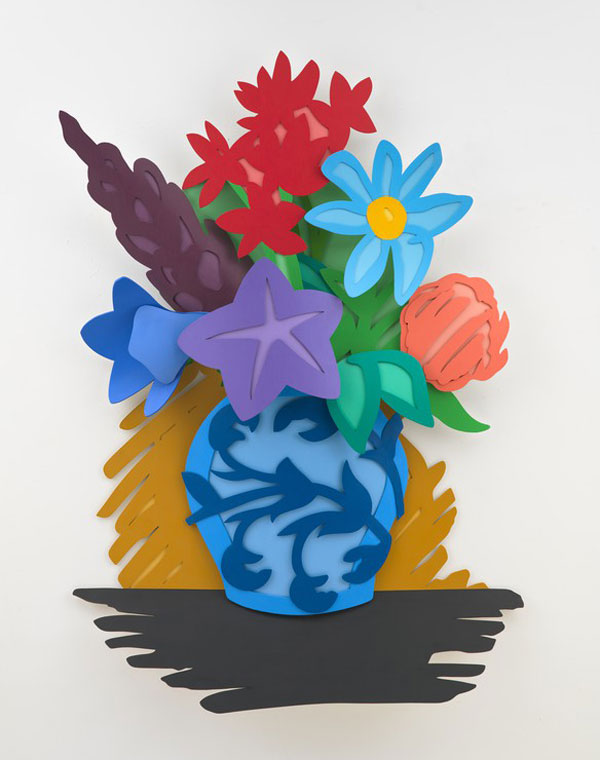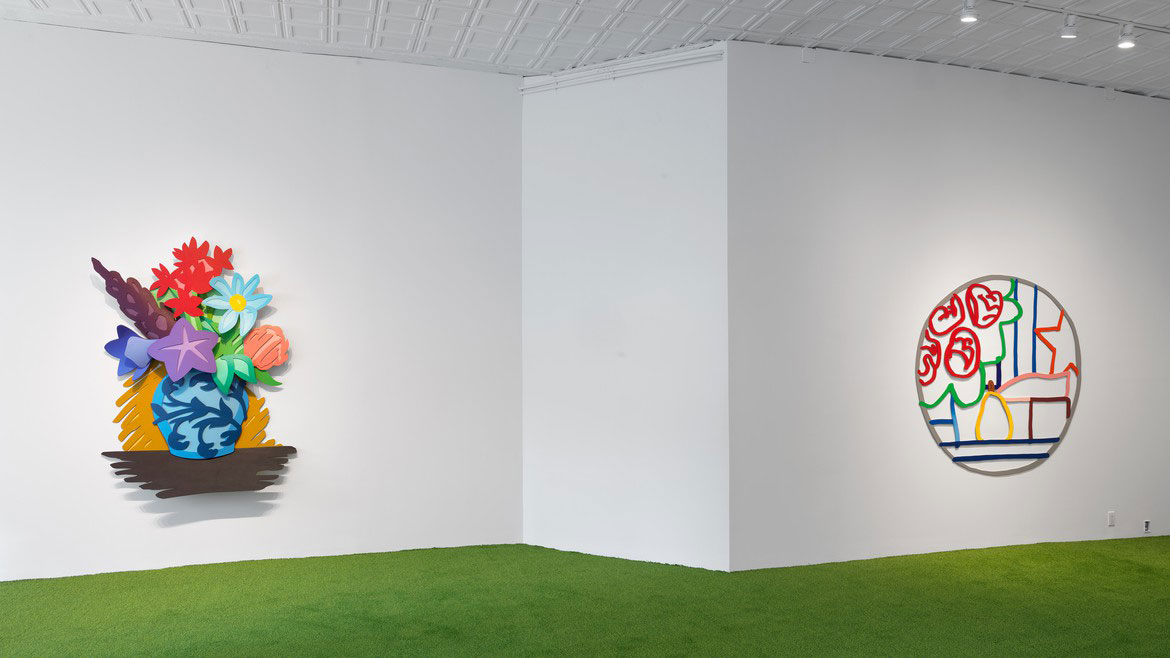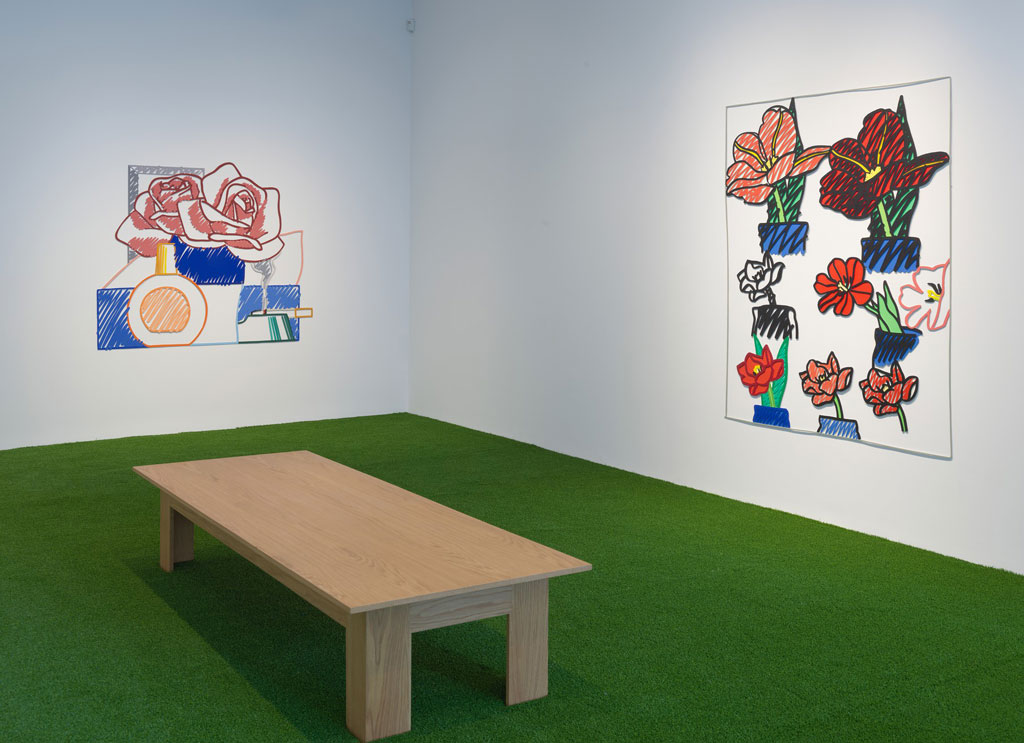ART-PRESENTATION:Tom Wesselmann-Flowers
 Tom Wesselmann became one of the leading American Pop artists of the 1960s, rejecting abstract expressionism in favor of the classical representations of the nude, still life, and landscape. He created collages and assemblages incorporating everyday objects and advertising ephemera in an effort to make images as powerful as the abstract expressionism he admired. He is perhaps best known for his Great American Nude series with their fat forms and intense colors.
Tom Wesselmann became one of the leading American Pop artists of the 1960s, rejecting abstract expressionism in favor of the classical representations of the nude, still life, and landscape. He created collages and assemblages incorporating everyday objects and advertising ephemera in an effort to make images as powerful as the abstract expressionism he admired. He is perhaps best known for his Great American Nude series with their fat forms and intense colors.
By Dimitris Lempesis
Photo: Gagosian Archive

Tom Wesselmann’s works that are on show at the exhibition “Flowers” comprise a series of metal cutouts, including works in the still-life genre such as “Mixed Bouquet (Filled In)” (1993) and “Still Life with Four Roses and Pear” (1993), which depict flowers in particular. Wesselmann’s outlines were cut by laser from a sheet of metal, then painted in bright colors, creating a hybrid form of the innovative shaped canvases with which he worked, whereby the supports of his paintings were tailored to the actual shapes of the subjects depicted. Between the colored lines of Wesselmann’s cutout compositions, the white walls of the gallery serve as negative space within the image. In keeping with his multifaceted approach to painting, the metal cutouts blur the distinction between drawn line, painted field, and sculpture. Tom Wesselmann was born in Cincinnati, Ohio on 23/2/1931. Between 1949 and 1951, he attended college in Ohio, first at Hiram College, later transferring to the University of Cincinnati, where he studied psychology. He put his education on hold after being drafted into the U.S. Army for the Korean War in 1952, though he was able to spend his time in service stateside. While in the army, he began drawing and decided to pursue a career as a cartoonist. Once he got out of the army he returned to Ohio and completed his degree in 1954, then began to study drawing at the Art Academy of Cincinnati. He had some success designing comic strips for men’s magazines and humor periodicals. In 1956, he moved to New York with the intention of furthering his career as a cartoonist, and was admitted to Cooper Union. Under the influence of Willem de Kooning he developed an interest in landscape painting and the nude, a landscape painting trip to rural New Jersey in 1958 changed the course of his career. He decided to abandon cartooning and pursue fine art. After graduating from Cooper Union in 1959, Wesselmann became involved with the Judson Gallery. The Judson Gallery supported a loosely organized group of experimental artists all of whom were still unknown, but many of whom would become famous: Claes Oldenburg, Robert Rauschenberg, Jim Dine and Marc Ratliff, were all part of this circle and the pastors offered them free space for exhibitions and performances. Wesselman took a job teaching high school in Brooklyn to pay the bills; occasionally he led math classes, but mostly he taught art. His association with the Judson Gallery led him into collage and assemblage, out of which he constructed large colorful nudes. His first solo exhibition took place at the Tanager Gallery in New York in 1961. In 1962, two of Wesselmann’s “Still Life” paintings debuted in the “New Realists” exhibition at the Sidney Janis Gallery. These works were firmly rooted in the context of midcentury American mass culture, with branded consumer goods a focus of the composition. This exhibition brought together artists who had been working along parallel lines since then, including Andy Warhol, Roy Lichtenstein, Robert Indiana, and Claes Oldenburg. From that point on, Wesselmann and other members of the American Pop art movement began to associate with one another professionally and socially. Wesselmann continued to develop two series, “Still Lifes” and “Great American Nudes”, throughout the mid 1960s and into the 1970s, with an emphasis on the idealized, erotic female nude that distanced him from other Pop artists. As time went on, he established a number of long-running series that retained elements of the works that had first brought him fame. He spent a summer in Cape Cod in 1966, and was inspired by the scenes of women lying on the beach, framed by coastal scenery. This vacation gave rise to the “Seascapes” series, in which specific features of the female body – a mouth, a foot, a breast – are a primary focus of the composition. He would also combine elements of all three series in his “Bedroom Paintings” which he began in the late 60s and would comprise a significant proportion of his artistic output throughout the 1970s and 1980s. The 80’s would also mark the beginning of a shift in focus to works in steel and aluminum, in the form of both freestanding sculpture as well as sketches etched into flat metal surfaces. Much of the latter work was done by hand, until he was able to acquire an industrial laser. He spent a year working with metalwork fabricator Alfred Lippincott to develop a technique that would allow him to work with metal with the precision he demanded. In the 1990s, Wesselmann’s art was primarily focused on two key subjects: the newer abstract format and the female nude. Even for an artist who had always tended to revisit earlier subjects, his work from this period stands out for its reflective quality.
Cover: Tom Wesselmann, Scribble Version of Still Life #58 (Opaque), 1984-91, Enamel on cutout aluminium, 147.3 x 176.5 cm, © The Estate of Tom Wesselmann / Licensed by ARS/VAGA- New York, Photo: Jeffrey Sturges
Info: Gagosian Gallery, 821 Park Avenue, New York, Duration: 14/6-16/8/19, Days & Hours: Mon-Sat 10:00-18:00, https://gagosian.com


